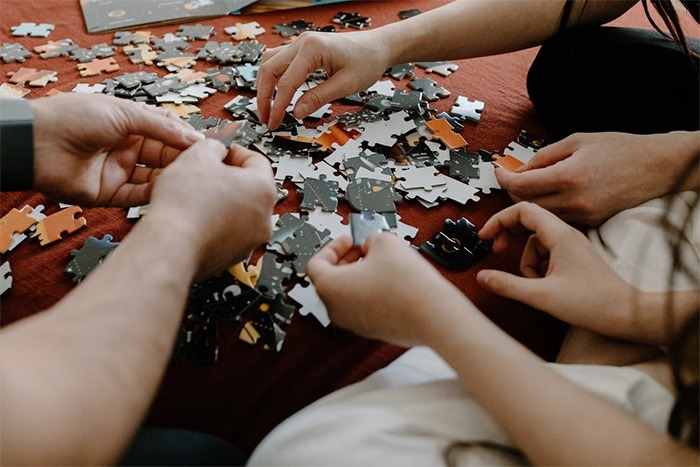On a cold, lazy day, what can you do as a family for free and encourages everyone to work together? Why not try your luck at a puzzle?
Puzzles have been famous in cultures all around the world for millennia. The first known puzzle, according to history, was a dissection of a square mentioned by Archimedes in 250BC. Since then, puzzles have grown significantly and currently include sports puzzles, wood crafts, jigsaw puzzles, polar express games, and animal planet games for families and children.
Puzzles are a splendid way to spend time together and work toward a common objective, whether you are an occasional puzzle fan or an avid fan. Here are some tips for picking a puzzle for the whole family!
Consider Your Family’s Age
You want to find puzzles that are tough but not frustrating for your children while they are small. Introduce chunky wooden puzzles or large plastic shapes to your young toddlers. You don’t want to put small children off. Choose a cartoon figure or a puzzle with giant, brightly colored pieces.
If you’re searching for a puzzle that will keep the kids engaged while still challenging the grownups, consider starting with huge pieces outside and getting smaller as you work your way in. This provides the kids the gratification of quickly working the outer border while also challenging the parents to deal with the smaller parts.
Know the Type of Puzzle
Even though there are many different types of puzzles, they always fall into two categories: inset and jigsaw puzzles.
Inset Puzzles:
Inset puzzles are usually made of wood, although they can also be made of foam. They are made up of huge, thick parts that do not interlock like jigsaw puzzles. In addition, all inset puzzles include a tray or frame for the pieces to fit into. The most common puzzles in this category are knob and peg puzzles. However, there are also chunky puzzles without knobs. These easy learning toys are very beneficial as first puzzles for young children.
Jigsaw Puzzles:
Jigsaw puzzles are made out of interlocking pieces and come in various sizes and levels of complexity. Frame and floor puzzles, as well as 3D puzzles, are the most common types of jigsaws. Because jigsaw puzzles are more challenging than inset puzzles, they are usually reserved for children older than toddlers and adults.
Determine the Number of Pieces
Consider a 6-year-old putting together a 9-piece frame puzzle. It would take them less than a minute to finish. A 500-piece puzzle, on the other hand, is likely to be an exciting and intriguing activity for the family.
This demonstrates how significant the amount of puzzle pieces is in meeting the skills of family members. When it comes to choosing suitable puzzles for the family, the number of pieces is one of the most important considerations.
If you take pleasure in puzzles but don’t want to spend days working on them, you should try something smaller. Consider how difficult you want your puzzle to be, and then choose the size that corresponds to the load of time you have available.
An Interesting Topic is a Must
Unicorn, an ocean scene, a beautiful landscape, cartoon characters, and artists are just a few examples of possible puzzle themes. While one family may enjoy BTS, another may despise it. The best topic to choose is primarily determined by which of their personal interests will be influenced.
When it comes to assembling the puzzle pieces, the right puzzle image can hugely motivate family members. It may even boost your family to work on a puzzle that is a little more difficult than usual.
Choose the Right Material
Wood, foam, and cardboard are the primary materials used to do puzzles.
- Cardboard warps are easily torn, especially when it’s not high quality, making it frustrating to work with because the pieces don’t stay fit well.
- Foam pieces are easier to interlock and stay in place compared to cardboard.
- Wooden puzzles are made with ultra-precise cuts and high-quality image printing, mainly when they’re laser-cut; these crisp edges ensure that the pieces feel smooth and lock together precisely. It’s also nice if the pieces are thick and durable.
Conclusion
You’ll have an easier time choosing the best puzzle for your family if you consider these factors. Then you’ll have a great time watching them actively engage in this instructive activity. It will assist kids in learning many essential life skills, such as problem solving and concentration.
Uninterrupted space is required for puzzles. Can you utilize your dining room table, or would you instead put up a card table in the living room and leave it out? Do you have young children who want to sit on the floor and solve the chunky wooden floor puzzles? Choose a location where you can leave the puzzle, so you don’t have to move it or rush through the fun!



